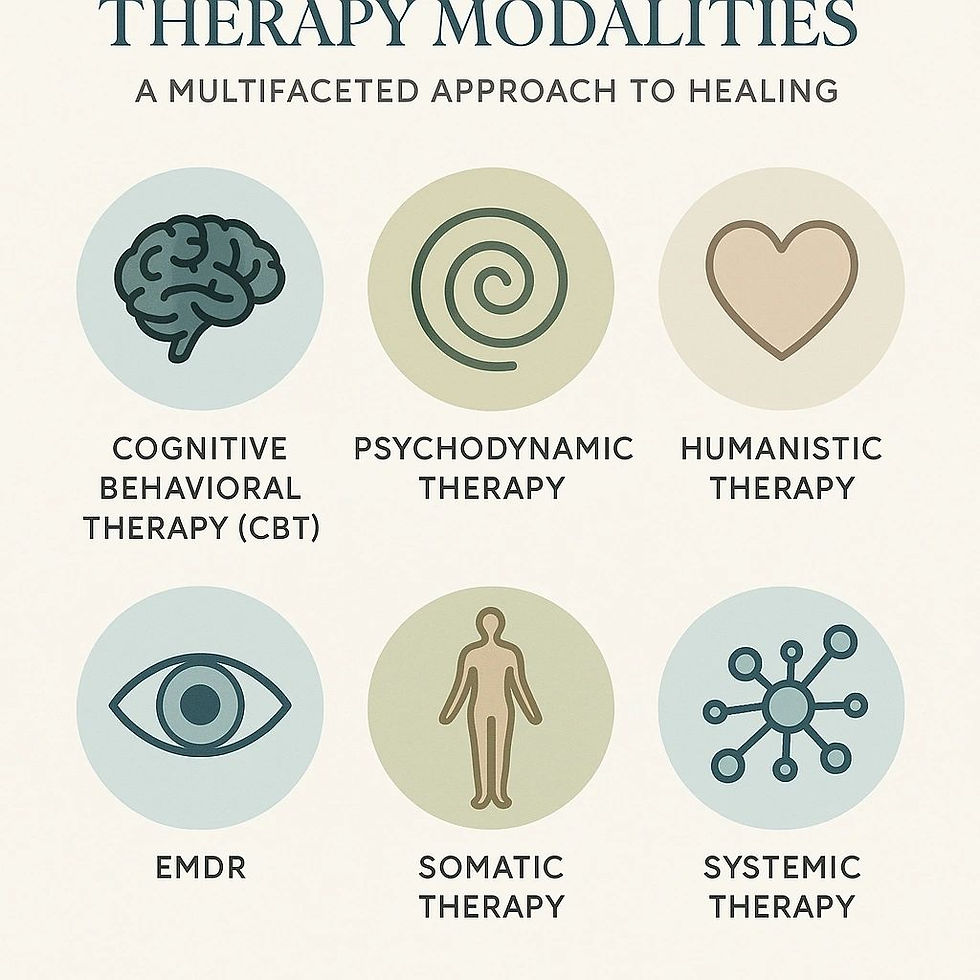Intersectionality: Being LGBTQ+ and POC
- michelleluna
- May 7
- 4 min read
In our society, identities are multifaceted, and for many individuals, their experience is shaped by multiple aspects of who they are. For LGBTQ+ people of color, these intersections of gender, sexual orientation, and race create a unique set of challenges that cannot be fully understood without acknowledging the interconnected nature of these identities. This is where the concept of intersectionality comes in—a framework that helps us understand how overlapping identities, such as being LGBTQ+ and a person of color, shape an individual's experiences in ways that differ from those of others who may belong to only one of these marginalized groups.
What Is Intersectionality?
The term intersectionality was first coined by Kimberlé Crenshaw, a scholar and activist, in 1989 to describe how different forms of discrimination (such as racism, sexism, homophobia, and others) overlap and intersect. It’s the idea that people experience oppression in complex, interconnected ways, and that you cannot fully understand someone’s experience of marginalization without recognizing the multiple factors that affect them.
For example, a Black lesbian may face homophobia within her community and racism in the LGBTQ+ community. Her experiences of discrimination cannot be separated into distinct categories; instead, they exist at the intersection of race, gender, and sexual orientation.
The Unique Struggles of LGBTQ+ People of Color
LGBTQ+ people of color often experience what is known as double marginalization—facing discrimination for both their sexual or gender identity and their race. The unique struggles they face can include:
1. Racism in the LGBTQ+ Community
While the LGBTQ+ community is often seen as a space for acceptance, racism can still be prevalent. People of color in the LGBTQ+ community may encounter exclusion, prejudice, or microaggressions from others in the community who don’t share their racial background. This can lead to feelings of isolation or rejection even within spaces that are meant to be affirming.
2. Homophobia/Transphobia within Communities of Color
Many communities of color may hold conservative or traditional views about gender and sexuality, which can result in rejection, stigmatization, or hostility toward LGBTQ+ individuals. Cultural expectations around gender roles or religious beliefs can cause LGBTQ+ people of color to feel torn between their cultural identity and their sexual or gender identity, leading to a sense of alienation from both worlds.
3. Economic Inequality
LGBTQ+ people of color may also face economic disadvantages that can limit their access to essential resources like healthcare, housing, and employment opportunities. The intersection of racial and sexual discrimination can contribute to higher rates of poverty, homelessness, and unemployment within these communities.
4. Mental Health Struggles
The combined pressures of racism, homophobia, and other forms of discrimination can have a significant toll on the mental health of LGBTQ+ people of color. They may experience higher rates of depression, anxiety, substance abuse, and suicidal ideation, due to the compounded weight of multiple forms of oppression.
The Importance of Affirming Intersectional Support
To support LGBTQ+ people of color, we must recognize the importance of intersectional spaces and resources. This means creating support systems and environments that understand and address both their sexual/gender identity and racial/ethnic identity. Below are ways we can be more supportive and build inclusive communities:
1. Create Inclusive LGBTQ+ Spaces
LGBTQ+ organizations and spaces must work to actively address racism and ensure that people of color feel welcomed, seen, and heard. This means not only addressing homophobia or transphobia but also confronting racism, xenophobia, and colorism within the community. Organizations should center the voices and needs of LGBTQ+ people of color and ensure leadership is representative of these groups.
2. Support Racial and Cultural Sensitivity
LGBTQ+ spaces should foster cultural sensitivity by learning about the different cultural backgrounds that people of color come from. This is especially important when working with immigrant populations or communities with unique traditions. Understanding how gender and sexuality are perceived in various cultural contexts can help allies offer more effective support.
3. Amplify Voices of LGBTQ+ People of Color
LGBTQ+ people of color need to be seen and heard in both racial justice and LGBTQ+ spaces. Amplifying their voices helps center their experiences and allows for more intersectional solutions to be developed. It's crucial to listen to their needs and support their leadership in advocacy work, whether it's on the topics of racial justice, queer liberation, or gender inclusion.
4. Mental Health Support
It’s essential to provide mental health services that understand the unique intersectional challenges LGBTQ+ people of color face. Therapists and counselors should be well-versed in both the challenges of racial discrimination and LGBTQ+ issues. It’s important that people feel comfortable and supported in spaces where both aspects of their identity are respected.
Strength in Intersectionality
Despite the challenges, LGBTQ+ people of color have a rich history of resilience, activism, and community-building. They have created safe spaces, both physically and virtually, to celebrate and honor their identities, and they have fought tirelessly for their rights and recognition in both racial and LGBTQ+ movements.
Some key figures in this movement include Marsha P. Johnson and Sylvia Rivera, two queer and transgender women of color who were pivotal in the early LGBTQ+ rights movement, including the Stonewall Riots. Their activism has paved the way for a more inclusive LGBTQ+ community, one that recognizes the need to address racial, ethnic, and cultural diversities within the movement.
Final Thoughts
Intersectionality is not just a theory—it’s a reality for many people, and for LGBTQ+ people of color, it’s a reality that shapes every aspect of their lives. To build a truly inclusive world, we must recognize and embrace these intersections, acknowledging the unique challenges that come from navigating multiple marginalized identities.
By amplifying the voices of LGBTQ+ people of color, confronting discrimination in all its forms, and fostering communities that are truly intersectional, we can work towards a more just and inclusive society for everyone, regardless of race, gender, or sexual orientation.









Comments